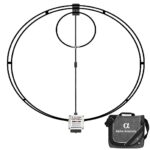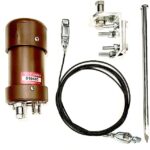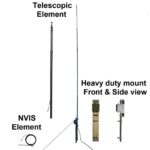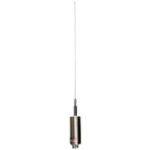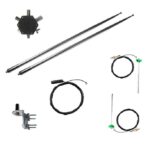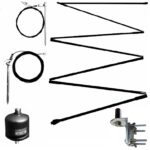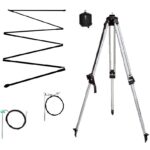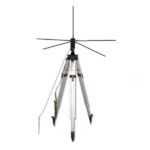Introduction
A narrower bandwidth is indicative of a more efficient resonant antenna and a broad band antenna will be less efficient. It is understandable why some operators prefer broad band antennas, which is simply because they are easier to use.
For example, when discussing a MagLoop with a retailer or someone in the general public, you may hear; ‘Oh, you don’t want a magnetic loop antenna!‘. This is often because (from a retailer’s aftermarket perspective) a broad band antenna is easier for their team to support, or the general public may have a bad experience trying to tune other manufacturer’s designs. Fortunately, Alpha’s MagLoops are easy to tune because when your hand is place on or near the tuning box, the SWR doesn’t change. However, we ourselves at Alpha Antenna use & build both, Resonant and Broad Band antennas, both of which are designed to meet an operator’s expectations and operating objectives.
So, what’s an amateur ham radio operator to do!?!
What Antennas Are Efficient?
Resonant antennas that need to be tuned when changing bands (frequencies) are typically more efficient, which would be indicative of loops and (OCF) dipoles.
Broad band antennas that do not need to be tuned are typically less efficient, which would be indicative of end-fed dipoles and base fed verticals.
Resonant HF Antennas
A dipole is used by industry as a ‘reference antenna’ to measure the efficiency of antenna systems. So, if you are looking for maximum efficiency in a portable antenna for VHF UHF and HF, consider the HexTenna by Alpha Antenna. This system can be deployed as either a dipole or vertical antenna. Alternatively, an OCF Dipole design like the portable Alpha MIL 2.0 or base HF ProMaster antennas can offer decent tuner free efficiency.
Broad Band HF Antennas
One of our broad band systems is the EMCOMM antenna. This system is designed to enhance NVIS in support of local Emergency Communications requirements. This inherently also limits the likely hood of transmissions entering an adversary’s operating position at distances greater than 1,000 miles. However, DX can be experienced when the band conditions are open.
For immediate DX satisfaction from a more efficient tuner free system, we recommend using a larger design, which comes in a Portable or Base version. In both of these designs, you would need the Optional ‘NVIS Kit Four 35′ NVIS elements’ to achieve the same omni-directional patterns as the EMCOMM antenna.
What Should I Buy?
Really, there are only two questions that you need to answer when choosing a base or portable HF antenna:
- What are my physical constraints?
- Where your physical constraints might be due to your environmental space or a disability.
- Do I want a Broad Band or a Resonant Antenna?
- Where Broad Band antennas that offer touch free tuning on multiple bands are often less efficient and Resonant antennas that must be tuned from band to band are typically more efficient.
We are here for you!
Feel free to use the scrollable chart below or CONTACT US if you have any questions. We would be happy to help you select your next antenna system.
Choose 'your' best HF VHF UHF Vertical, Dipole, MagLoop antenna
See more Technical Articles


